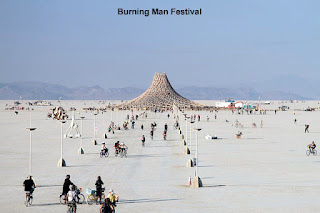For those seeking a deeper understanding of the unseen dimensions shaping human experience, the 8th Sphere provides a fascinating lens--one that bridges metaphysics, psychology, and mythic cosmology.
What Is the 8th Sphere? A Brief Overview
In classical Theosophical cosmology, existence is often described through a layered hierarchy of "spheres" or worlds, each corresponding to different levels of density and consciousness. Humanity traditionally evolves through seven stages or spheres, representing a gradual ascent from dense material existence toward increasingly refined spiritual awareness.
The 8th Sphere, however, stands apart. It is not part of humanity's intended evolutionary arc. Instead, it represents a divergent current--a realm or state of being where consciousness becomes trapped, diverted, or prematurely hardened.
While interpretations vary, the core idea remains:
The 8th Sphere symbolizes a spiritual cul-de-sac--a domain where human soul forces can become crystallized into materialism, illusion, and stagnation. Steiner described it as a kind of "shadow world," an influence attempting to pull human evolution off course, not through obvious evil but through subtle distortions of perception and thought.
The 8th Sphere and Human Consciousness
One of the most compelling aspects of the 8th Sphere is its psychological dimension. Rather than imagining it as an otherworldly pit, many esoteric thinkers describe it as a state of consciousness that individuals and societies can slip into.
Here are a few of the patterns traditionally associated with 8th Sphere influences:
1. Over-Materialization: The 8th Sphere thrives where humanity becomes excessively identified with the material world--where meaning is flattened to only what can be measured, owned, quantified, or consumed. This is not materialism in a philosophical sense alone, but a soul-level fixation on the tangible at the expense of inner life.
2. Illusions That Feel Like Truth: Steiner warned that the 8th Sphere operates not through blatant lies but through seductive half-truths--ideas that appear rational or intuitive but ultimately sever us from deeper spiritual understanding.
3. Emotional Sedimentation: On a personal level, this sphere is associated with emotions or memories that become "stuck"--grief that doesn't move, fear that fossilizes into worldview, or anger that calcifies into identity.
4. Hyper-Intellectualism Without Wisdom: Another pathway into the 8th Sphere is a kind of disembodied intellect--thinking divorced from empathy, intuition, or the living world of the heart. In this sense, the 8th Sphere is not simply a realm "out there," but a pattern of forces working within human consciousness itself, influencing how we see, feel, and evolve.
The Cosmic Drama: Forces at Work
Within Steiner's larger cosmology, the 8th Sphere is connected to the activity of certain spiritual beings--particularly the Ahrimanic forces. Where Luciferic energies lead us into escapism, fantasy, and transcendence without grounding, Ahrimanic forces push us toward rigid materialism, mechanization, and the loss of spiritual vision.
The 8th Sphere can be seen as the Ahrimanic attempt to create an alternative destiny for humanity--one rooted entirely in the quantitative, mechanical, and material.
Ahrimanic Influence Manifests As:
- Technological over-dependence
- Reduction of nature to resources
- Thinking that denies the existence of the spiritual
- Systems that treat humans as data points rather than beings of soul
This is not to paint technology or rationality as villains. Instead, the 8th Sphere warns us of imbalance--of becoming so enmeshed in the mechanistic worldview that we lose touch with the living, creative, spiritual forces that make us human.
Where the 8th Sphere Shows Up in Modern Life
The concept might feel abstract--until you start noticing its fingerprints on the world around us.
Digital Realities and the Disappearing Self
Steiner could never have imagined smartphones, virtual realities, or algorithmic identity shaping, yet the 8th Sphere speaks almost prophetically to these developments. The danger is not technology itself but its capacity to pull consciousness into simulated realms, disconnecting us from our bodies, nature, and direct relationships.
Consumer Culture as Soul Harvesting
The endless cycle of acquiring, upgrading, and discarding echoes the 8th Sphere's dynamic: fixation without fulfillment, movement without growth.
Polarization and Frozen Perception
When people become locked into rigid narratives--unable to imagine perspectives outside their own--we see 8th Sphere forces at work. Consciousness becomes immobile, crystallized, unable to evolve.
Loss of Reverence
Perhaps most telling is the quiet disappearance of reverence--toward nature, toward each other, toward the mysteries of existence. When the world becomes only a problem to solve or a resource to exploit, the 8th Sphere has already taken root.
Escaping the 8th Sphere: Paths of Integration
The good news is that the 8th Sphere is not a trapdoor but a warning signal, a mirror calling us back to balance.
1. Reawakening the Imagination: Steiner saw imagination--true, living imagination--as the antidote to materialist thinking. Artistic creation, mythic perception, and spiritual reflection help loosen the soul from its crystallized forms.
2. Embodiment: Simple physical presence--breathing, movement, nature connection--anchors consciousness in the living world rather than the mechanized one.
3. Warm Thinking: Spiritual traditions often speak of "thinking with the heart"--an integration of intellect and empathy that resists Ahrimanic cooling.
4. Community and Communion: Genuine human encounters (not mediated through screens) restore what the 8th Sphere tries to erode: empathy, presence, and shared humanity.
5. Spiritual Discernment: The subtle illusions of the 8th Sphere require discernment--the ability to sense when ideas are spiritually alive versus mechanically hollow.
A Symbol for Our Times
Whether one takes it literally or metaphorically, the concept of the 8th Sphere is strikingly relevant today. It captures the tension between the living and the mechanical, the soulful and the synthetic, evolution and stagnation. Ultimately, the 8th Sphere is a call to remember who we are: beings of imagination, creativity, freedom, and spiritual depth. It reminds us that the world we inhabit is shaped not only by material forces but by the currents of consciousness we choose to cultivate. As we navigate an age increasingly defined by technology, abstraction, and distraction, the 8th Sphere invites us to stay awake--to live fully in the dance between matter and spirit, grounded yet luminous, practical yet deeply alive.








